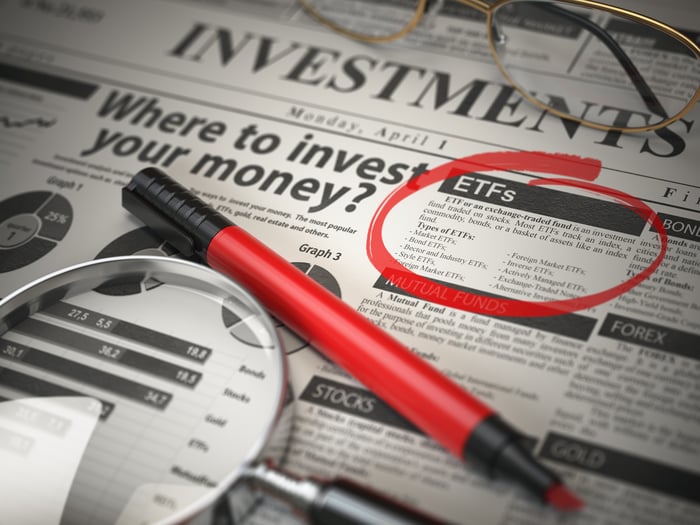The 2 Best Vanguard Index Funds to Buy Now With $700 and Hold Forever

Key Points
Index funds simplify investing by bundling hundreds or even thousands of stocks into a single investment vehicle, effectively creating diversified portfolios.
The Vanguard S&P 500 ETF returned 299% over the last decade, and it outperformed every major international stock market over the last two decades.
The Vanguard Total International Stock ETF has doubled the S&P 500's return in 2025, and its cheaper valuation could lead to more outperformance in the future.
Index funds let investors build diversified portfolios without needing to research and select individual stocks, which can be a time-consuming endeavor for even the most experienced traders.
Investors with $700 should consider buying one share of the Vanguard S&P 500 ETF (NYSEMKT: VOO) and one share of the Vanguard Total International Stock ETF (NASDAQ: VXUS). At current prices, that would create a portfolio with roughly 85% exposure to U.S. stocks and 15% exposure to international stocks.
Where to invest $1,000 right now? Our analyst team just revealed what they believe are the 10 best stocks to buy right now. Continue »
In my opinion, these are the best Vanguard index funds to buy today because they provide cheap and easy exposure to every major stock market in the world. Here are the important details.

Image source: Getty Images.
1. Vanguard S&P 500 ETF
The Vanguard S&P 500 ETF tracks the S&P 500, which itself measures the performance of 500 large U.S. companies that include 80% of domestic equities and 40% of global equities by market value. The Vanguard S&P 500 ETF provides exposure to many of the most influential businesses in the world, but it is most heavily weighted toward technology stocks.
The five largest holdings in the Vanguard S&P 500 ETF are listed by weight below:
- Nvidia: 8%
- Microsoft: 7.3%
- Apple: 5.7%
- Amazon: 4.1%
- Alphabet: 3.7%
The Vanguard S&P 500 ETF returned 299% over the last decade, inclusive of dividend payments, compounding at 14.8% annually. That is a few percentage points more than the long-term average, but history says patient investors can expect solid profits in the future.
The S&P 500 has generated a positive return over every 15-year period since it was created in 1957. That means any investor who bought and held an S&P 500 index fund for at least 15 years made money regardless of when they made the purchase. Also, the S&P 500 crushed every major international equity market during the last 20 years.
The last item of consequence is the fee structure. The Vanguard S&P 500 ETF has a very low expense ratio of 0.03%, meaning shareholders will pay just $3 per year on every $10,000 invested in the fund. You would be hard pressed to find a cheaper index fund with a better track record than this one.
2. Vanguard Total International Stock ETF
The Vanguard Total International Stock ETF measures the performance of more than 8,600 companies outside of the U.S. It is heavily weighted toward developed markets like Japan, the United Kingdom, and Canada, but also offers exposure to emerging markets like China, India, and Taiwan.
The five largest holdings in the Vanguard Total International Stock ETF are listed by weight below:
- Taiwan Semiconductor Manufacturing: 2.6%
- Tencent Holdings: 1.2%
- SAP: 0.8%
- ASML: 0.7%
- Alibaba Group: 0.7%
The Vanguard Total International Stock ETF returned 114% over the past decade, including dividend payments, compounding at 7.9% annually. That pales in comparison to the return generated by S&P 500 during the same period, so I would allocate a smaller percentage of my portfolio to this index fund.
Why own the fund at all? The Vanguard International Stock ETF has a price-to-earnings ratio of 15, much cheaper than the Vanguard S&P 500 ETF at 24 times earnings. That has led to outperformance in 2025 -- the Vanguard International Stock ETF has gained 24% this year, double what the S&P 500 has gained -- and that outperformance could continue in the future.
However, the Vanguard International Stock ETF is a little pricier. It has an expensive ratio of 0.05%, meaning shareholders will pay $5 per year on every $10,000 invested in the fund.
Should you invest $1,000 in Vanguard S&P 500 ETF right now?
Before you buy stock in Vanguard S&P 500 ETF, consider this:
The Motley Fool Stock Advisor analyst team just identified what they believe are the 10 best stocks for investors to buy now… and Vanguard S&P 500 ETF wasn’t one of them. The 10 stocks that made the cut could produce monster returns in the coming years.
Consider when Netflix made this list on December 17, 2004... if you invested $1,000 at the time of our recommendation, you’d have $649,037!* Or when Nvidia made this list on April 15, 2005... if you invested $1,000 at the time of our recommendation, you’d have $1,086,028!*
Now, it’s worth noting Stock Advisor’s total average return is 1,056% — a market-crushing outperformance compared to 188% for the S&P 500. Don’t miss out on the latest top 10 list, available when you join Stock Advisor.
*Stock Advisor returns as of September 8, 2025
Trevor Jennewine has positions in Amazon, Nvidia, and Vanguard S&P 500 ETF. The Motley Fool has positions in and recommends ASML, Alphabet, Amazon, Apple, Microsoft, Nvidia, Taiwan Semiconductor Manufacturing, Tencent, Vanguard S&P 500 ETF, and Vanguard Total International Stock ETF. The Motley Fool recommends Alibaba Group and recommends the following options: long January 2026 $395 calls on Microsoft and short January 2026 $405 calls on Microsoft. The Motley Fool has a disclosure policy.





